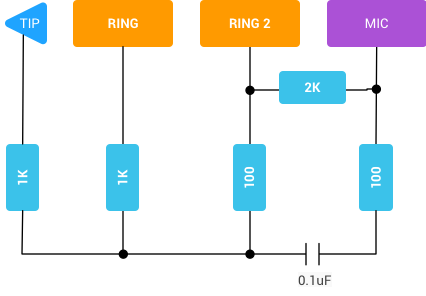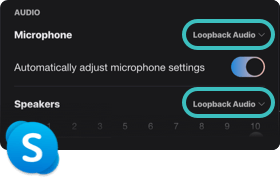
- #Virutal audio loopback how to
- #Virutal audio loopback software
- #Virutal audio loopback code
- #Virutal audio loopback mac
^ the line above is so that I can also hear the effects of the soundboard. Pactl load-module module-loopback latency_msec=1 source=LoopBack_Sink.monitor sink= Pactl load-module module-loopback latency_msec=1 source=LoopBack_Sink.monitor sink=Main_Sink If you dont want your mic on the Main_Mic remove this ^ line above. Pactl load-module module-loopback latency_msec=1 source= sink=Main_Sink Pactl load-module module-remap-source master=Main_Sink.monitor source_name=virt_mic source_properties=scription=Main_Mic Pactl load-module module-remap-source master=LoopBack_Sink.monitor source_name=virt_mic source_properties=scription=LoopBack_Mic Pacmd load-module module-null-sink sink_name=LoopBack_Sink sink_properties=scription=LoopBack_Sink Pacmd load-module module-null-sink sink_name=Main_Sink sink_properties=scription=Main_Sink

So I was making a soundboard for voip applications. Just a simple virtual speaker that pipes the audio to a virtual microphone. No need of that JaCk ThInG or ALSA loopback or some ffmpeg hack way to accomplish this simple task. These are the two commands that does it all. Once installed, Loopback presents a screen where you can create virtual audio devices.
#Virutal audio loopback software
Pactl load-module module-remap-source master=Virtual_Sink.monitor source_name=virt_mic source_properties=scription=VirtualMic Loopback by Rogue Amoeba software is a powerful audio routing app which allows easily sending sound from one application to another. Pacmd load-module module-null-sink sink_name=Virtual_Sink sink_properties=scription=Virtual_Sink public IP addresses or hostnames, account numbers, email addresses) before posting!ĭoes this sidebar need an addition or correction? Tell me hereĪfter many painful days of searching for it by going through many forms and trying out stuff. Note: ensure to redact or obfuscate all confidential or identifying information (eg. If you fix the problem yourself, please post your solution, so that others can also learn. ✻ Smokey says: convert your lawn to a meadow to fight climate change! If you're posting for help, please include the following details, so that we can help you more efficiently: Any distro, any platform! Explicitly noob-friendly.

The CopyFrom function copies sample data from the DMA buffer.ĭestination - Points to the destination buffer.Linux introductions, tips and tutorials.

#Virutal audio loopback mac
These virtual devices appear on your Mac just like a real, physical device, and can be. Loopback creates virtual audio devices, which merge audio from multiple applications and input devices into a single source. It’s like a high-end mixing board, right inside your Mac. What the hell am I doing wrong that I am unable to bring in audio with Loopback from Chrome or Skype into my OBS/YouTube stream I downloaded WavTap as that. STDMETHODIMP_(void) CMiniportWaveCyclicStream::CopyFrom( Loopback gives you the power to do just that with just a few clicks. I expect valuable suggessions/codes about this code,also specify what is wrong with this code? -Thanks in advance.Ĭode: //=
#Virutal audio loopback code
The code is working but output have clicking and crakling sounds along with music. Here I'm writing the audio looping part of the code.
#Virutal audio loopback how to
I don't know how to implement CopyTo and CopyFrom functions to make a VALC such that any audio data apears at the input port of VALC (Virtual Audio Device) is available at the output port of VALC (similar to Virtual Audio Cable v4.13).Please help me to codeĬopyTo and CopyFrom functions? Shortly I got a source code of an Audio Loopback Driver whose functions similar to VALC. I am going to make a Virtual Audio Loopback Cable/Pipeline(a Virtual Audio Device).MSVAD source code getting along with WDK only perform capture and save audio data which apears at the input port of the device,


 0 kommentar(er)
0 kommentar(er)
